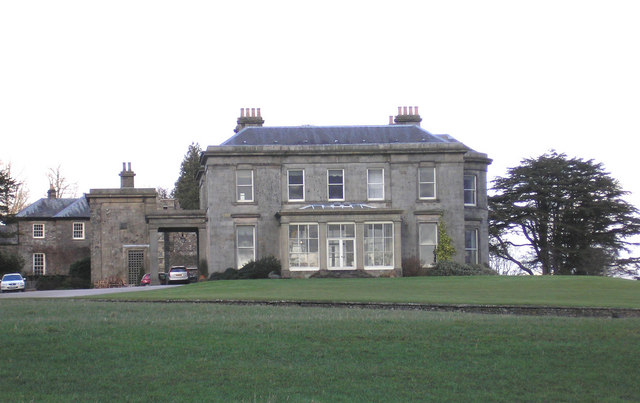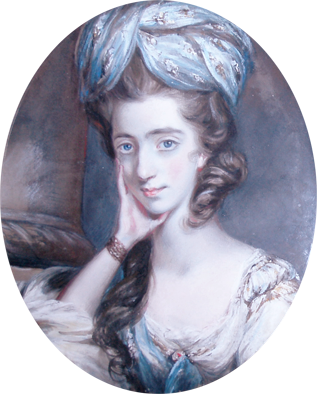|
Christopher Wilson (son)
Christopher Wilson (1765–1845) was an English businessman, banker and political activist of anti-reform views. Early life He was the eldest son of Christopher Wilson and his wife Margaret Parke. He attended Hawkshead School with William Wordsworth. Wilson went into the cotton spinning trade, near Staveley.Satchell and Wilson, p. 55. He had a business interest in gunpowder, being a partner in the Low Wood Gunpowder Mill at Haverthwaite. This mill was a major supplier of export gunpowder for Africa to Liverpool, up to the Slave Trade Act 1807. Wilson was connected to Liverpool through his uncle Thomas Parke. Wilson joined the Kendal Bank, founded by his father, Joseph Maude, and Thomas Crewdson, as a partner, in 1795. He became senior partner in 1812, when the bank became Wilson, Crewdson & Co. Election of 1818 The 1818 election for Westmorland was closely contested by Henry Brougham, against two Tories of the locally predominant Lowther family, Viscount Lowther and Henry ... [...More Info...] [...Related Items...] OR: [Wikipedia] [Google] [Baidu] |
Christopher Wilson (father)
Christopher Wilson (1731–1804) was an English merchant and banker in Kendal. Life He was the eldest son of Thomas Wilson of Natland, a hosier, and Ellen Burrough or Burrow. He inherited land and property from his father. Going into business himself as a hosier, he started to invest in Linsey-woolsey, linsey manufacture by 1766. From beginnings buying fleeces to dye, he built up a merchant connection in textiles, and gunpowder, though partnerships, sales travellers, and exports. Wilson built Blindbeck House in Kendal, and his family moved there in 1785. Wilson founded the Kendal Bank (Maude, Wilson & Crewdson), with Joseph Maude and Thomas Crewdson, on 1 January 1788 (Crewdson was a cousin to Wilson). This bank opened in Farrers House, Stramongate (moving to Highgate in 1792) simultaneously with John Wakefield (banker), John Wakefield's bank; the two banks merged in 1840. Wilson served as alderman of Kendal, being mayor in 1798–9. Family Wilson married in 1757 Margaret Parke, ... [...More Info...] [...Related Items...] OR: [Wikipedia] [Google] [Baidu] |
Sandys Birket Foster
{{disambiguation, geo ...
Sandys may refer to: * Sandys (surname), an Anglo-Saxon surname, including a list of people with the name * Sandyston Township, New Jersey * Sandys Row Synagogue, London * Sandy's, a fast-food restaurant * Sandys Wason, early 20th-century curate of Cury, Cornwall See also * Baron Sandys * Sandys baronets * Sandys Parish, Bermuda * Sandy (other) Sandy may refer to: People and fictional characters *Sandy (given name), including a list of people and fictional characters * Sandy (surname), a list of people *Sandy (singer), Brazilian singer and actress Sandy Leah Lima (born 1983) *(Sandy) A ... [...More Info...] [...Related Items...] OR: [Wikipedia] [Google] [Baidu] |
Clement Shorter
Clement King Shorter (19 July 1857 – 19 November 1926) was a British journalist and literary critic. After editing the ''Illustrated London News'', Shorter founded and edited ''Sketch'', ''The Sphere'', and ''Tatler''. Biography Clement Shorter was born on 19 July 1857 at Southwark, in London, the youngest of three boys. The son of Richard and Elizabeth (née Clemenson) Shorter, young Clement attended school from 1863 to 1871 in Downham Market, Norfolk. He was still quite young when his father died in Melbourne, Australia, where he had gone in an attempt to make a better life for his young family. Once finished with his schooling, Shorter spent four years working for several booksellers and publishers on Paternoster Row in London. In 1877, he found himself working in the Exchequer and Audit Department at Somerset House, as a low-level clerk. [...More Info...] [...Related Items...] OR: [Wikipedia] [Google] [Baidu] |
Union Workhouse
In Britain, a workhouse () was an institution where those unable to support themselves financially were offered accommodation and employment. (In Scotland, they were usually known as poorhouses.) The earliest known use of the term ''workhouse'' is from 1631, in an account by the mayor of Abingdon reporting that "we have erected wthn our borough a workhouse to set poorer people to work". The origins of the workhouse can be traced to the Statute of Cambridge 1388, which attempted to address the labour shortages following the Black Death in England by restricting the movement of labourers, and ultimately led to the state becoming responsible for the support of the poor. However, mass unemployment following the end of the Napoleonic Wars in 1815, the introduction of new technology to replace agricultural workers in particular, and a series of bad harvests, meant that by the early 1830s the established system of poor relief was proving to be unsustainable. The New Poor Law of 1834 ... [...More Info...] [...Related Items...] OR: [Wikipedia] [Google] [Baidu] |
Casterton, Cumbria
Casterton is a small village and civil parish close to Kirkby Lonsdale on the River Lune in the south east corner of Cumbria, England. In the 2001 census the parish had a population of 500, decreasing at the 2011 census to 425. The parish is bounded by Kirkby Lonsdale, Barbon, Dent, Leck and Burrow-with-Burrow, and lies just inside the western edge of the Yorkshire Dales National Park: much of the Three Counties System, the longest explored natural cave system in the country, lies beneath it. The western boundary, towards Kirkby Lonsdale, is formed by the river and has one of the finest medieval bridges in the country, one of those known as Devil's Bridge and a local landmark. The village is situated approximately from junction 36 (Kendal and the Lakes exit) of the M6 motorway, near the intersection of the A65 Kendal to Leeds road, and the A683 which runs up the Lune valley from the port of Heysham to the market town of Kirkby Stephen. The name of the village hints at a Ro ... [...More Info...] [...Related Items...] OR: [Wikipedia] [Google] [Baidu] |
William Carus Wilson
William Carus Wilson (7 July 1791 – 30 December 1859) was an English churchman and the founder and editor of the long-lived monthly '' The Children's Friend''. He was the inspiration for Mr Brocklehurst, the autocratic head of Lowood School, depicted by Charlotte Brontë in her 1847 novel ''Jane Eyre''. Early life He was born at Heversham as William Carus.Juliet Barker, 'Wilson, William Carus (1791–1859)', ''Oxford Dictionary of National Biography'', Oxford University Press, 200accessed 2 July 2014(subscription required) While he was a child his father (also called William) inherited an estate at Casterton, near Kirkby Lonsdale in Westmorland and took on the surname Wilson (which was a condition of the bequest). His father served as one of Cockermouth's two MPs in the 1820s. He was educated at Trinity College, Cambridge, graduating B.A. in 1815. Although refused orders that year owing to his excessive Calvinism, he was ordained the following year and returned to the Lune v ... [...More Info...] [...Related Items...] OR: [Wikipedia] [Google] [Baidu] |
Poor Law Commission
The Poor Law Commission was a body established to administer poor relief after the passing of the Poor Law Amendment Act 1834. The commission was made up of three commissioners who became known as "The Bashaws of Somerset House", their secretary and nine clerks or assistant commissioners. The commission lasted until 1847 when it was replaced by a Poor Law Boardthe Andover workhouse scandal being one of the reasons for this change. Edwin Chadwick, one of the writers of the 1832 Royal Commission hoped to become Commissioner but instead only got the post of Secretary. This caused clashes with the Poor Law Commissioners. This was one reason the Poor Law Commission was eventually abolishedthere was too much infighting within the organisation. Powers The Poor Law Commission was independent of Parliament. This made it vulnerable to criticism from those inside Parliament. In the parishes the commissioners were almost universally hated.Poverty and Public Health 1815-1948 by Rosemary Rees ... [...More Info...] [...Related Items...] OR: [Wikipedia] [Google] [Baidu] |
Poor Relief
In English and British history, poor relief refers to government and ecclesiastical action to relieve poverty. Over the centuries, various authorities have needed to decide whose poverty deserves relief and also who should bear the cost of helping the poor. Alongside ever-changing attitudes towards poverty, many methods have been attempted to answer these questions. Since the early 16th century legislation on poverty enacted by the English Parliament The Parliament of England was the legislature of the Kingdom of England from the 13th century until 1707 when it was replaced by the Parliament of Great Britain. Parliament evolved from the great council of bishops and peers that advised t ..., poor relief has developed from being little more than a systematic means of punishment into a complex system of government-funded support and protection, especially following the creation in the 1940s of the welfare state. Tudor era In the late 15th century, parliament took actio ... [...More Info...] [...Related Items...] OR: [Wikipedia] [Google] [Baidu] |
Select Vestry
A vestry was a committee for the local secular and ecclesiastical government for a parish in England, Wales and some English colonies which originally met in the vestry or sacristy of the parish church, and consequently became known colloquially as the "vestry". Overview For many centuries, in the absence of any other authority (which there would be in an incorporated city or town), the vestries were the sole ''de facto'' local government in most of the country, and presided over local, communal fundraising and expenditure until the mid or late 19th century using local established Church chairmanship. They were concerned for the spiritual but also the temporal as well as physical welfare of parishioners and its parish amenities, collecting local rates or taxes and taking responsibility for numerous functions such as the care of the poor, the maintaining of roads, and law enforcement, etc. More punitive matters were dealt with by the manorial court and hundred court, and latter ... [...More Info...] [...Related Items...] OR: [Wikipedia] [Google] [Baidu] |
Thomas Chalmers
Thomas Chalmers (17 March 178031 May 1847), was a Scottish minister, professor of theology, political economist, and a leader of both the Church of Scotland and of the Free Church of Scotland. He has been called "Scotland's greatest nineteenth-century churchman". He served as Vice-president of the Royal Society of Edinburgh from 1835 to 1842. The New Zealand town of Port Chalmers was named after Chalmers. A bust of Chalmers is on display in the Hall of Heroes of the National Wallace Monument in Stirling. The Thomas Chalmers Centre in Kirkliston is named after him. Early life He was born at Anstruther in Fife, the son of Elizabeth Hall and John Chalmers, a merchant. Age 11 Chalmers attended the University of St Andrews studying mathematics. In January 1799 he was licensed as a preacher of the gospel by the St Andrews presbytery. In May 1803, after attending further courses of lectures at the University of Edinburgh, and acting as assistant to the professor of mathemati ... [...More Info...] [...Related Items...] OR: [Wikipedia] [Google] [Baidu] |
George Webster (architect)
George Webster (3 May 1797 – 16 April 1864) was an English architect who practised in Kendal, which was at the time in Westmorland, and later in Cumbria. All of his works were executed near his practice, and were located in Cumbria, in north Lancashire, and in the adjacent parts of Yorkshire. Most of his work was carried out on domestic buildings, but he also designed churches, and public and commercial buildings. Early life George Webster came from a family of builders who later became architects, his father Francis (1767–1827) being described as a " mason, builder, and architect" whose speciality was the production of marble chimney-pieces and funerary monuments. It is not known how George received his architectural training, but he joined his father's business as a partner, and in 1818, he designed for the country house of Read Hall in Lancashire. Works Webster's works were geographically confined to the area around his office in Kendal, in what is now Cumbria, the nor ... [...More Info...] [...Related Items...] OR: [Wikipedia] [Google] [Baidu] |







